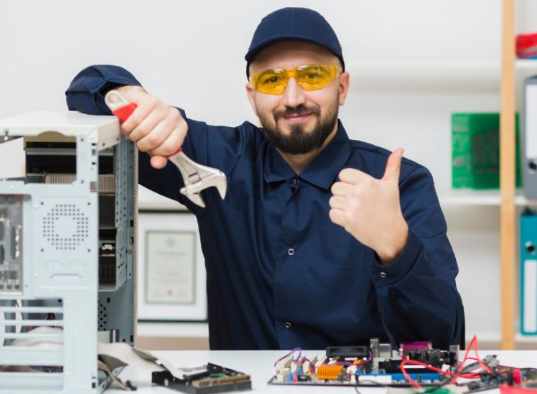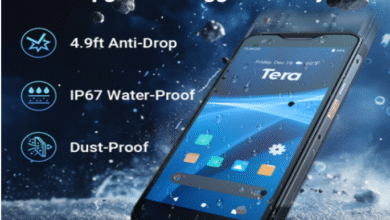Understanding Computers and Hardware: A Complete Guide

In today’s digital age, computers have become an indispensable part of everyday life. From smartphones to desktops, they power our communication, work, and entertainment. At the heart of every computer lies a complex network of components known as hardware. Understanding this hardware is essential not just for tech enthusiasts, but also for average users who want to make informed decisions when purchasing or maintaining a computer. Companies like PCredCom and pcredcom.com are pivotal in providing high-quality hardware and solutions to customers across the globe.
What is Computer Hardware?
Computer hardware refers to the physical components of a computer system. These are the tangible parts that you can touch and see, unlike software, which consists of the digital instructions that run on the machine. Hardware includes everything from the central processing unit (CPU) and memory modules to hard drives, graphic cards, and even peripherals like keyboards and monitors.
Hardware can be categorized into two major types: internal components and external components. Internal hardware refers to the devices housed within the computer case, such as the motherboard, CPU, RAM, GPU, and power supply. External hardware includes input/output devices like printers, scanners, external hard drives, and monitors.
Essential Internal Components of a Computer
One cannot talk about computer hardware without exploring its vital internal parts. These are the foundation of any computing device, and each has a specific role in the overall operation:
Central Processing Unit (CPU): Often referred to as the “brain” of the computer, the CPU handles all the instructions it receives from hardware and software running on the machine.
Motherboard: This is the main circuit board that connects all components of the computer. It allows communication between the CPU, RAM, storage, and other peripherals.
Random Access Memory (RAM): RAM is the short-term memory of the computer. It stores data temporarily that the CPU needs immediate access to.
Storage Devices: These include hard disk drives (HDD) and solid-state drives (SSD). SSDs are faster and more reliable but typically more expensive.
Graphics Processing Unit (GPU): Responsible for rendering images, videos, and animations, the GPU is crucial for gamers, designers, and video editors.
Power Supply Unit (PSU): Converts electricity from an outlet into usable power for the internal components of the computer.
For those seeking reliable hardware components, brands like PCredcom ensure quality and compatibility across a range of devices.
External Components and Peripherals
External hardware devices allow users to interact with the computer and extend its capabilities. These include:
Monitor: Displays the graphical user interface (GUI) of the operating system and software.
Keyboard: An essential input device for typing and command input.
Mouse: A pointing device that interacts with the GUI.
Printers and Scanners: Convert digital documents into physical form and vice versa.
External Drives: Useful for backup and transferring data between systems.
When selecting peripherals, compatibility and quality should be the primary considerations. The product catalog on pcredcom.com offers a wide selection to meet different computing needs.
How Hardware Affects Performance
The performance of a computer is directly influenced by its hardware. A powerful CPU enables faster data processing. More RAM allows the system to handle multiple applications simultaneously. An advanced GPU provides smooth visual performance, especially in gaming and creative work. High-speed SSDs reduce boot time and accelerate software loading.
Over time, users may notice performance bottlenecks. This is often a sign that an upgrade is needed. For instance, upgrading from 8GB to 16GB RAM or from an HDD to an SSD can lead to significant performance boosts.
Upgrading vs. Replacing a Computer
One common dilemma is deciding whether to upgrade existing hardware or replace the computer altogether. Upgrading can be more cost-effective and sustainable. Common upgrades include increasing RAM, adding a larger SSD, or installing a new GPU.
However, if the motherboard is outdated or the CPU is several generations old, it might be more efficient to purchase a new system. Companies like PCredCom specialize in both upgrade components and new machines tailored to different budgets and purposes.
Choosing the Right Computer for Your Needs
Not all computers are created equal. The ideal configuration depends on the user’s needs:
Basic Use: For web browsing, word processing, and light media consumption, a mid-range CPU with integrated graphics and 8GB of RAM is sufficient.
Gaming: Requires a high-performance CPU, a powerful dedicated GPU, at least 16GB RAM, and efficient cooling systems.
Content Creation: Professionals using video editing or 3D rendering software need high-end GPUs, fast SSDs, and often 32GB or more RAM.
Business Use: Emphasis is on reliability, security, and multitasking. Business desktops often include features like dual monitor support and encrypted storage.
PCredcom is a trusted provider for both personal and business computing needs, offering solutions that range from budget builds to high-performance workstations. Visit pcredcom.com to browse options suited for every application.
Common Hardware Problems and Solutions
Even the best hardware can encounter issues. Some of the most common problems include:
Overheating: Usually caused by dust build-up or faulty cooling systems. Regular cleaning and investing in quality fans can help.
Boot Failures: Could be due to failing hard drives, corrupted memory, or power issues. Diagnosing the component through BIOS or external tools is essential.
Slow Performance: Might be due to insufficient RAM or a fragmented HDD. Upgrading to SSDs or increasing RAM often solves this.
Connectivity Issues: Faulty cables, ports, or outdated drivers can disrupt device communication.
Tech support from reliable vendors like PCredCom ensures that customers receive timely assistance and high-quality replacement parts.
The Future of Computer Hardware
Technology is rapidly evolving. Future trends in computer hardware include:
Quantum Computing: Promises unparalleled computing power for specific types of problems.
Neural Processors: Specialized chips for AI tasks, enhancing capabilities in automation and real-time learning.
Modular Computers: Allow users to easily upgrade components without needing a technician.
Eco-Friendly Materials: With environmental concerns rising, hardware made from recyclable and biodegradable materials is gaining popularity.
Conclusion
Understanding computer hardware is crucial in a world where technology is deeply embedded in our lives. Whether you’re a casual user or a professional, the right hardware can make a significant difference in performance and experience. Reliable brands such as PCredcom and trusted platforms like pcredcom.com provide users with access to top-tier components, expert guidance, and dependable customer support. Investing time in understanding hardware pays off in smoother operations, longer system life, and a better overall digital experience.

